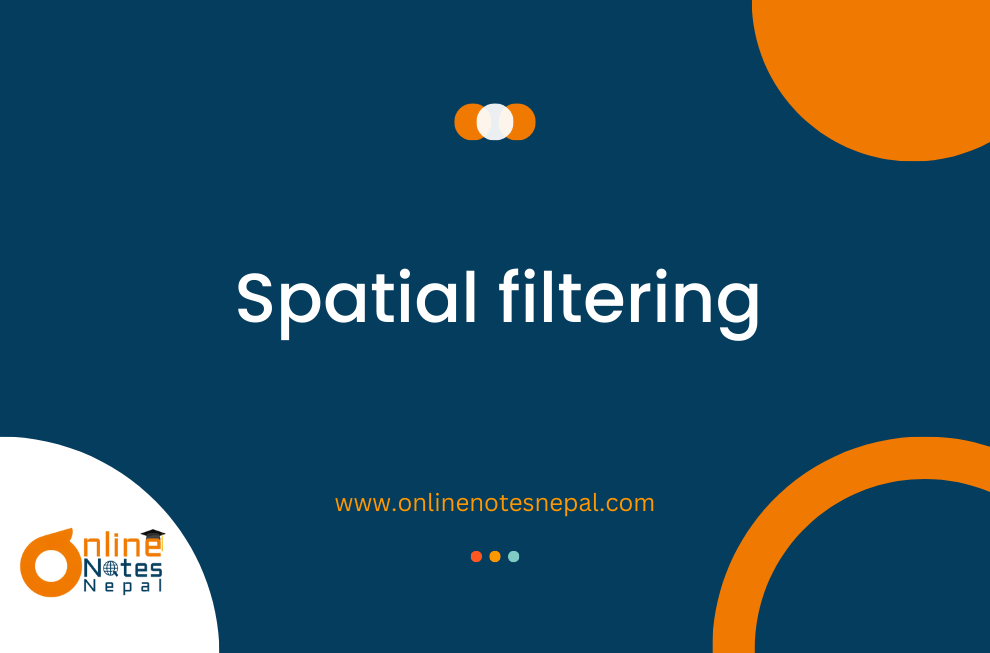Published by: Neha Khadka
Published date: 26 Jul 2024

Image processing techniques such as spatial filtering are used to highlight or identify characteristics in an image. To achieve certain effects, it entails altering the spatial distribution of pixel values in an image. Linear and non-linear filters are the two basic types of spatial filters.
Linear filters operate by taking a weighted sum of the pixel values in a neighborhood around each pixel. Common linear filters include:
Averaging Filter (Mean Filter):The Averaging Filter, also known as the Mean Filter, is a technique used to smooth an image by substituting the average value of each pixel in its surrounding area for each pixel.
Gaussian Filter: This kind of averaging filter gives greater weight to the central and less weight to the periphery pixels in the neighborhood by using a Gaussian function to assign weights to the pixels in the neighborhood.
Laplacian Filter: This filter highlights areas with abrupt intensity changes, which improves edges. It's frequently applied to edge detection.
Sobel Filter: This filter computes the gradient of the image intensity to identify edges in a picture. Using convolution kernels that respond maximally to edges running both vertically and horizontally with respect to the pixel grid, it highlights edges.
The pixel values are not simply added together in a weighted manner by non-linear filters. They use a non-linear procedure inside the neighborhood as an alternative. Typical non-linear filters consist of:
Median Filter: This filter lowers noise by substituting the neighborhood median value for each pixel value. It works especially well to eliminate pepper and salt sounds.
Max/Min Filters: These filters substitute the maximum or minimum value of the pixels in a pixel's neighborhood for each pixel value. They can be applied to edge detection and noise reduction.
Mode Filter: This filter is helpful for smoothing and denoising since it substitutes the most common value (mode) in each pixel's neighborhood for the original value.
Noise Reduction :Image noise is reduced by applying filters such as the mean, median, and Gaussian filters.
Edge detection: To identify edges in images, filters such as the Prewitt, Laplacian, and Sobel filters are employed.
Image Sharpening: To sharpen images, apply filters that accentuate edges.
Feature extraction: It is the process of using filters to draw attention to particular aspects of an image, which facilitates analysis and interpretation.
Spatial filtering is a fundamental technique in image processing with broad applications in computer vision, medical imaging, photography, and more.